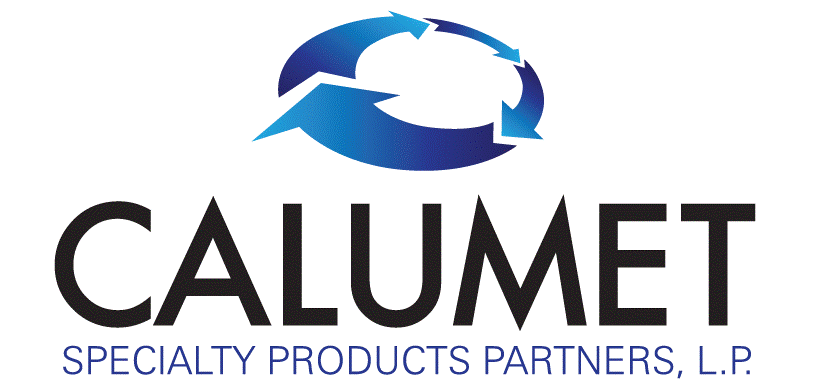VIA EDGAR
December 13, 2017
H. Roger Schwall
Assistant Director
Office of Natural Resources
United States Securities and Exchange Commission
Division of Corporation Finance
100 F Street, N.E., Mail Stop 4628
Washington, D.C. 20549-3561
Re: Calumet Specialty Products Partners, L.P.
Form 10-K for Fiscal Year Ended December 31, 2016
Filed March 6, 2017
File No. 0-51734
Ladies and Gentlemen:
Set forth below are the responses of Calumet Specialty Products Partners, L.P. (the “Company”, “we,” “us” or “our”), to comments received from the staff of the Division of Corporation Finance (the “Staff”) of the Securities and Exchange Commission (the “Commission”) by letter dated December 1, 2017, with respect to Form 10-K for fiscal year ended December 31, 2016, File No. 0-51734, filed with the Commission on March 6, 2017 (the “Form 10-K”).
For your convenience, each response is prefaced by the exact text of the Staff’s corresponding comment in bold, italicized text. All references to page numbers and captions correspond to the Form 10-K unless otherwise specified.
Form 10-K for Fiscal Year Ended December 31, 2016
Selected Financial Data, page 50
Non-GAAP Financial Measures, page 53
| |
| 1. | We note that your reconciliations of net income (loss) to EBITDA include a reconciling item related to debt extinguishment costs. Question 103.01 of the SEC Compliance and Disclosure Interpretations: Non-GAAP Financial Measures defines EBITDA as “earnings before interest, taxes, depreciation and amortization.” In this regard, revise the title of your non-GAAP financial measure to distinguish it from the defined measure of EBITDA. |
Securities and Exchange Commission
December 13, 2017
Page 2
RESPONSE: We acknowledge the Staff’s comment, in future filings we will revise our presentation of EBITDA to remove the adjustments for debt extinguishment costs. In future filings, any such costs will be included as an adjustment only when presenting Adjusted EBITDA.
Notes to Consolidated Financial Statements
Note 2 - Summary of Significant Accounting Policies, page 95
Inventories, page 95
| |
| 2. | Your accounting policy disclosure states that inventory write downs are subject to reversal in subsequent periods, not to exceed LIFO cost, if prices recover. During the year ended December 31, 2016, you recorded a $39.2 million decrease to cost of sales related to your lower of cost or market valuation. Tell us how you considered SAB Topic 5.BB, which states that a write-down of inventory to the lower of cost or market at the close of a fiscal period creates a new cost basis that subsequently cannot be marked up based on changes in underlying facts and circumstances. Refer also to FASB ASC 330-10-35-1 and 35-14. |
RESPONSE: We acknowledge the Staff’s comments. As noted by the Staff, the Company’s crude oil and refined products inventories are valued at the lower of cost or market, with inventory costs determined using the LIFO method of accounting. The inventory balances held by the Company represent the volumes necessary to perform operations and execute its marketing strategies. Due to the operational nature of the assets utilized to produce and store these inventories, the physical units of inventory held by the Company at the end of a reporting period are produced and sold in the subsequent period. The volume is then replaced within the subsequent period in order to allow the various production assets to continue operating at the desired level. An example of this would include the minimum inventory requirement that the Company needs in order to maintain production levels. Despite the fact that the total volume held within the storage tanks may remain constant, the physical units at the end of an accounting period are the first volumes to be sold in the subsequent period and are replaced with new volumes in order to maintain the minimum requirement.
As part of the quarterly financial reporting process, the Company compares its LIFO inventory balances recorded for each of its inventory pools against current market prices of the respective inventories. To the extent the LIFO inventory balance exceeds current market prices for the respective inventory pool, a lower of cost or market reserve is recorded. When accounting for the established reserves in subsequent periods, the Company considered the SEC Staff Accounting Bulletin Topic 5.L, LIFO Inventory Practices and Section 6 of the American Institute of Certified Public Accountants Issues Paper “Identification and Discussion of Certain Financial Accounting and Reporting Issues Concerning LIFO Inventories” (the “AICPA Issues Paper”). Specifically, sections 6-26 through 6-31 of the AICPA Issues Paper concluded that after a company disposes of the physical units of inventory for which the reserves were provided, it should reverse the reserve. The reserve at the end of the year should be based on a new lower of cost or market computation. Because the physical units of inventory are sold and replaced, the Company applies the guidance from section 6-31 of the AICPA Issues Paper and reverses the reserve previously recorded and calculates a new lower of cost or market reserve at the end of each period.
Securities and Exchange Commission
December 13, 2017
Page 3
As of December 31, 2015 and 2016, the Partnership’s lower of cost or market reserves on its inventory balances totaled $162.0 million and $122.8 million, respectively. The net change resulted in a $39.2 million gain in 2016.
* * * * *
Please direct any questions that you have with respect to the foregoing or if any additional supplemental information is required by the Staff, please contact the undersigned at (317) 957-5377 or Gillian A. Hobson of Vinson & Elkins L.L.P. at (713) 758-3747.
Very truly yours,
CALUMET SPECIALTY PRODUCTS PARTNERS, L.P.
By: Calumet GP, LLC, its General Partner
By: /s/ D. West Griffin
Name: D. West Griffin
| |
| Title: | Executive Vice President and Chief Financial Officer |
Enclosures
cc: Gillian A. Hobson, Esq.
Vinson & Elkins L.L.P.
